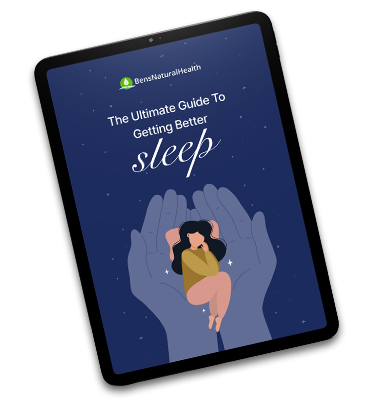- What is amlodipine?
- What is amlodipine used for?
- What are the side effects of amlodipine?
- Reasons people stop taking amlodipine
- What are the side effects of stopping amlodipine?
- How long after stopping amlodipine do side effects stop?
- Risks of stopping amlodipine
- Stopping amlodipine safely
- How long does amlodipine stay in your system after stopping?
- Amlodipine withdrawal
- 15 alternatives to amlodipine
- Ben's Organic Garlic Tincture
- Conclusion
- Source
What are the side effects of stopping amlodipine?
What exactly happens after you stop taking amlodipine?
These are questions that people ask when their doctor prescribes this drug.
The answer, in this case, is pretty straightforward, but if you’re unsure about your options, you should talk to your doctor or pharmacist.
In this blog post, you will read the truth about amlodipine. We will explore the side effects of stopping amlodipine and the associated risks.
Let’s get started!
What is amlodipine?
Amlodipine is a type of drug known as a calcium channel blocker. The commercial names include Amlodipine and Norvasc.
Amlodipine is often used in conjunction with other blood pressure meds. So, apart from the brand-name drug, you could find it mixed with other ingredients in the same pill. It is available in tablets and oral suspension (Katerzia).
Amlodipine is safe when taken as directed. However, it is important to consult your physician before taking this drug. That is why they are not over-the-counter medicines.
What is amlodipine used for?
Calcium channel blockers such as amlodipine are used to treat high blood pressure. They may also reduce the risk of angina (chest pain) and cardiovascular complications (heart attack, stroke). It can be combined with a diuretic and other drugs to control blood pressure levels.
How does amlodipine work?
All calcium channel blockers work by blocking calcium ions from coming into blood vessel muscle cells. This reduces blood flow, lowering blood pressure and reducing the risk of complications.
Amlodipine mainly works in the blood vessels. Thus, other calcium channel blockers can slow the heart rate, but amlodipine does not.
The blood vessels relax, and the blood flows more smoothly through the body. This lowers blood pressure and protects the vessels from damage.
That’s why doctors use amlodipine for high blood pressure and coronary artery disease and to prevent stroke, angina pain, and other cardiovascular complications.

What are the side effects of amlodipine?
Amlodipine has potent vasodilatory properties. You should only use this blood pressure medication after a prescription. It comes with several possible side effects.
These include (1):
Dizziness
This is a fairly common side effect caused by amlodipine. It may occur when you first start taking these prescription medications or after an increase in dosage. Taking amlodipine with food can minimize this side effect.
Headache
Headaches can also occur when you take amlodipine and typically improve with pain medications such as ibuprofen. Fortunately, this side effect is relatively rare and mild to moderate in severity.
Drinking more fluids usually improves headaches. This symptom usually disappears after one week on amlodipine.
Edema
This is the clinical name for swelling due to fluid accumulation. It often happens in the lower extremities. Ankle swelling and other types of edema are triggered because the arteries are dilated and increase the blood input.
If your veins are ineffective in returning the blood flow to the heart, an excess stays in your lower extremities and causes leg swelling. This usually improves by raising your legs.
Dry mouth
This can also happen sometimes. This side effect occurs because the blood vessels in the tongue and throat constrict, reducing blood flow to these tissues. This can cause a drying feeling in the mouth and throat and irritation of the tongue.
Other side effects
There is a long list of side effects, but some are very rare. For example, we can sometimes have amlodipine tinnitus (ringing in your ears). Others are not so rare, but they do not cause alarming problems, such as face flushing.
Reasons people stop taking amlodipine
Some people experience the side effects listed above at a very high frequency. When they are frequent or intense, doctors may recommend coming off amlodipine and using another blood pressure medication.
Some people also discontinue amlodipine because they believe their blood pressure levels are normal.
However, high blood pressure does not have symptoms, and patients shouldn’t stop their treatment without a doctor’s advice.
Another reason to stop taking amlodipine is to experience a severe adverse event. For instance (1):
- Cardiovascular problems such as arrhythmia, fainting (syncope), or vasculitis.
- Neuropathies, tingling (paresthesia), and other nervous system problems.
- Serious gastrointestinal complications such as pancreatitis
- Allergic reactions and other organ complications such as liver problems.

What are the side effects of stopping amlodipine?
Amlodipine is a safe medication when you use it correctly. However, discontinuing the drug or stopping amlodipine can have important side effects.
They are more prevalent if you have congestive heart disease or liver problems. In the elderly, the side effects of stopping amlodipine can also increase.
These are the most common examples:
Rebound high blood pressure
The most critical side effect of stopping amlodipine is an increase in blood pressure readings.
This medication is prescribed to lower blood pressure in diagnosed patients. Stopping their treatment brings back the problem the drug was treating.
When hypertension returns, not all patients will experience symptoms. There are not always symptoms of rebound hypertension. Thus, monitoring your blood pressure is fundamental to avoiding this problem instead of trusting your sensations.
A study published in the Cochrane Database of Systematic Reviews shows that stopping blood pressure medications in older adults may not always lead to high blood pressure (2). However, we shouldn’t underestimate the risks and monitor blood pressure in these patients as we do with anyone else.
Chest pain
Amlodipine is commonly used in patients with hypertension and angina. The latter is a heart disease that triggers chest pain because the coronary arteries constrict and the blood flow to the cardiac muscle diminishes. The cardiac muscle with poor oxygen supply starts to suffer and triggers chest pain.
Angina can be treated with nitroglycerin. However, amlodipine improves the symptom because it relaxes the blood vessels.
Consequently, if you stop amlodipine, angina symptoms may return or become worse because oxygen requirements are no longer met. This side effect may not show up in some people.
Discontinuing amlodipine exacerbates angina in patients with a diagnosed heart disease because their coronary arteries suffer a sudden spasm (vasospastic angina).
A recent case report published in The Netherlands Journal of Medicine suggests that some patients may develop serious cardiovascular events such as cardiac arrest if they suddenly stop amlodipine without monitoring (3).

Hemodynamic problems
Amlodipine promotes the widening of the blood vessels and improves blood flow in different tissues. Thus, we can say it has a hemodynamic effect; amlodipine changes how the blood moves throughout the body.
By stopping amlodipine, different tissues can reduce their blood flow. For instance, you may have a slightly reduced renal function, and amlodipine is probably increasing your glomerular filtration rate (GFR).
Stopping amlodipine, in this case, will reduce the GFR, which may fall under the normal threshold. Hemodynamic changes are not always apparent and only manifest in patients with underlying diseases (4).
Dizziness and headaches
Some patients may experience dizziness and headache when they first initiate treatment with amlodipine. This is usually a temporary effect and goes away after you adjust to the medication.
It happens because there are hemodynamic changes, as mentioned above, and your body needs to adapt to the changes in the blood flow.
The same happens when you stop amlodipine. Some patients may experience dizziness and headache once again as their body adjusts to not having amlodipine around.
Moreover, some people may increase their risk of vascular ischemia and experience more postural instability when they quit amlodipine (5).
As noted, most side effects of stopping amlodipine are related to cardiovascular function. Thus, we recommend that all patients under amlodipine talk to their doctors about the best way to discontinue amlodipine if they are planning to do so.
If you are experiencing severe or very uncomfortable side effects of your current therapy, you must talk to a healthcare professional to find a solution that considers what you feel and does not increase your cardiovascular risks.
Sign Up For Our Newsletter!
- Receive 10% off our best-selling supplements
- Get Your FREE Sleep Guide
- Be the first to hear about sales and promotions
- Stay up to date on our latest health news
How long after stopping amlodipine do side effects stop?
The side effects of stopping amlodipine listed above can be broken down into two types.
Some are due to an underlying condition that amlodipine was treating. Others are caused by adjustments in your organism as it adapts to the hemodynamic changes. Most side effects are triggered by a return to the baseline condition.
On the other hand, dizziness and headaches take a few weeks to wear off as your body adapts to the hemodynamic changes.
Risks of stopping amlodipine
As noted above, amlodipine is a treatment for high blood pressure and is given to patients with coronary artery disease.
The drug improves both conditions. It reduces symptoms such as chest pain and the risk of cardiovascular complications.
When you get off amlodipine, these cardiovascular risks will likely return.
- As high blood pressure increases, the long-term consequences of hypertension (kidney problems, visual problems) become more prevalent.
- There is an increase in cardiovascular risk, especially if you are diagnosed with heart disease. If you stop controlling your blood pressure, there is a risk of acute myocardial infarction, stroke, and cardiac arrest.
- Angina symptoms come back, and there is a high risk of chest pain symptoms.
Stopping amlodipine safely
An article published in the Best Practice Journal addressed the question of how to stop antihypertensive drugs safely. Gradual reduction of the dose is recommended for calcium channel antagonists. Taper doses can be reduced gradually over 3 to 6 months.
However, if you do not have baseline heart conditions such as angina, your doctor may choose to switch to another antihypertensive medication without reducing your dose first.
Monitoring is fundamental, and keeping records of your blood pressure levels for a few days is usually recommended to track your changes and adjust your treatment accordingly.
Thus, if you are considering stopping amlodipine, talk to your doctor for instructions on how to do it based on your baseline health conditions, age, and other medications you might be taking.

How long does amlodipine stay in your system after stopping?
After stopping amlodipine, the drug will remain in your blood for a few days. This is usually one week, but sometimes it takes ten days to clear the blood from amlodipine.
The exact time depends on different factors:
- The dose and frequency of amlodipine you were taking. This modulates the concentrations in your organism.
- Your age, because older adults have a slower metabolism and drug clearance is slower.
- Your health, because your liver and kidneys are actively used to eliminate amlodipine.
- And your weight, because it takes longer to remove the drug in people with excess body weight.
Amlodipine withdrawal
Symptoms after stopping amlodipine are not counted as withdrawal syndrome, as we see with opioid medications and other drugs that induce tolerance. They are primarily due to a return to the baseline disease.
In this regard, they are different from the classic medicine withdrawal syndrome, which features new symptoms that are not explained by a baseline disease.
However, some studies have described a type of withdrawal syndrome after discontinuing antihypertensive drug therapy. It happens to a very limited number of people and is considered rare.
Withdrawal symptoms of antihypertensive therapy may include the following symptoms (6):
- Tachycardia
- Headaches
- Agitation
- Nausea
- Nervousness
These symptoms are temporary and tend to improve after 36 to 72 hours.
15 alternatives to amlodipine
Lifestyle changes
Treating hypertension is not always done with antihypertensive drugs. Sometimes, lifestyle modifications are enough to bring your levels back to normal.
For instance:
Cut back on salt
High sodium intake can increase blood pressure. So, eat more fresh, whole foods and fewer processed foods.
Drink less alcohol
Alcohol can temporarily raise blood pressure. As a side note, the combination of amlodipine and alcohol may cause drug interactions in your body.
Lose weight
There’s a close association between blood pressure and obesity. Thus, losing weight can help manage your blood pressure.
Eat more fiber
Fiber can help lower cholesterol and blood sugar, both of which can raise blood pressure. Fiber is in fruits, vegetables, beans, and nuts.
Move more
Regular exercise can lower your blood pressure. Even walking each day can help.
Actually, amlodipine and exercise can be much more effective than amlodipine alone in lowering blood pressure.
Natural remedies
You also have antihypertensive herbal products and natural remedies. For instance:
Rosemary
This herb belongs to the same family as mint, sage, and thyme, and it contains several compounds that may reduce blood pressure.
Ginger
Ginger is an excellent herb to increase blood circulation and induce blood vessel relaxation, like amlodipine.
Lavender
It triggers a calming effect that you can use to treat hypertension induced by a strong emotional response. Lavender can be particularly effective if you have anxiety, panic attacks, and similar problems.
Other drugs
Additionally, your doctor can give you plenty of options if you need to change your medication.
There are plenty of alternatives, such as beta-blockers (labetalol, atenolol), angiotensin receptor blockers (valsartan, losartan), and ACE inhibitors (enalapril). Your doctor may also try switching calcium channel blockers (amlodipine, nicardipine) or discontinue calcium channel blockers altogether.
Ben’s Organic Garlic Tincture
Ben’s Organic Garlic Tincture is a powerful natural antiviral and antibacterial compound designed to lower blood pressure and cholesterol, improve blood flow, and improve heart health.
Some studies have found that garlic is as effective as traditional medications to lower blood pressure, except without any harmful side effects.
Additionally, a critical review found that increased garlic consumption reduced the risk of cardiovascular disease.

Conclusion
The bottom line is that amlodipine is a prescribed medicine for patients with a diagnosis of hypertension. Side effects include edema in the ankle area, headache, and dizziness. Its effectiveness in lowering blood pressure has a few downsides.
Stopping amlodipine could cause hemodynamic changes, rebound high blood pressure, and cardiovascular events. If you want to quit taking amlodipine, you must talk to your doctor.
You can use lifestyle changes, herbal remedies, and other prescription drugs. However, only a doctor will be able to tell you which one is best for you.
Explore More








